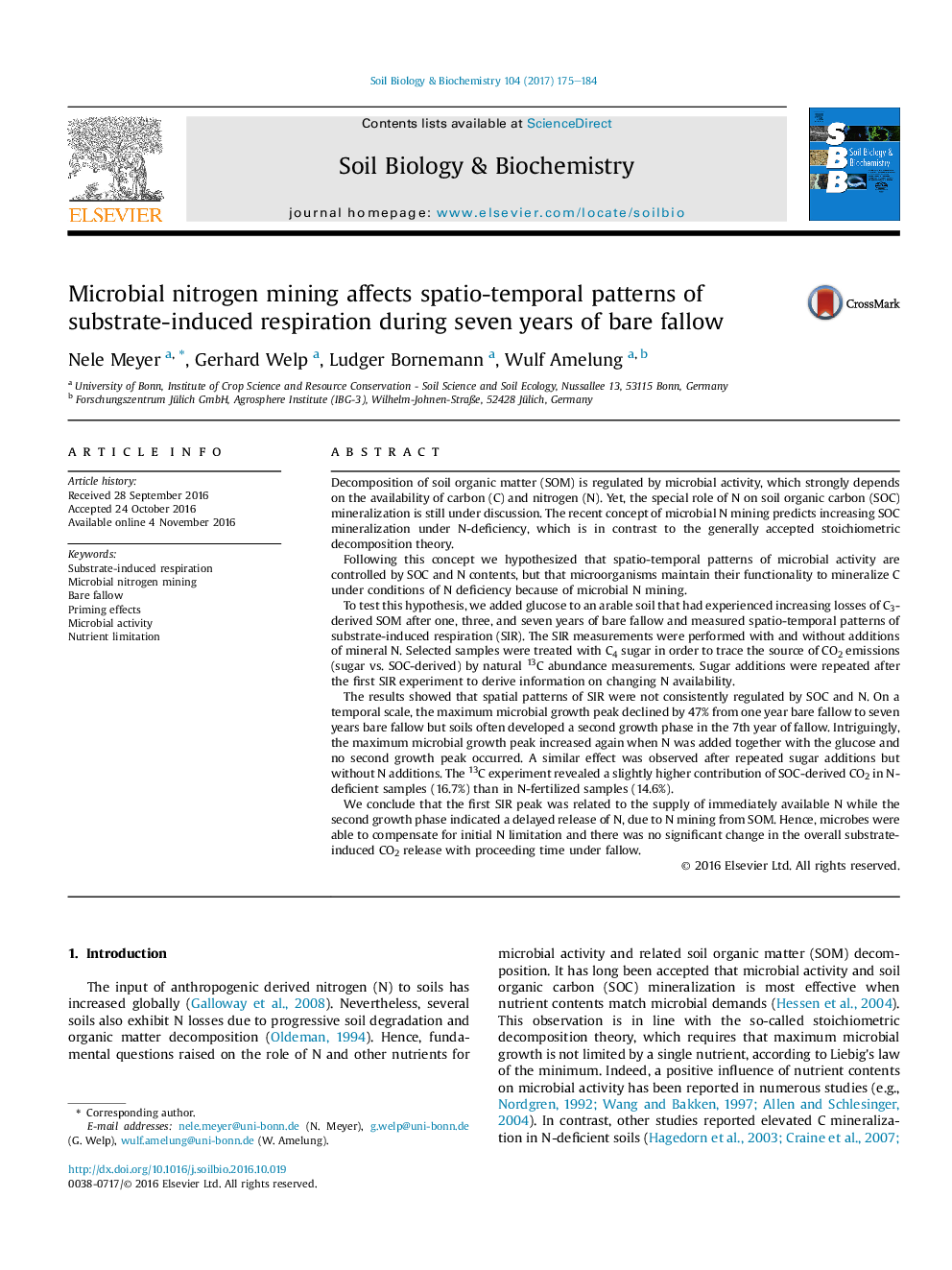| کد مقاله | کد نشریه | سال انتشار | مقاله انگلیسی | نسخه تمام متن |
|---|---|---|---|---|
| 5516458 | 1542580 | 2017 | 10 صفحه PDF | دانلود رایگان |
- Spatial patterns of SIR parameters change with increasing time of bare-fallow.
- Indications for microbial nitrogen mining in N-deficient soils are presented.
- Microbes maintain their ability to mineralize glucose after 7 years of bare fallow.
- SIR is a useful tool to examine microbial nitrogen acquisition strategies.
Decomposition of soil organic matter (SOM) is regulated by microbial activity, which strongly depends on the availability of carbon (C) and nitrogen (N). Yet, the special role of N on soil organic carbon (SOC) mineralization is still under discussion. The recent concept of microbial N mining predicts increasing SOC mineralization under N-deficiency, which is in contrast to the generally accepted stoichiometric decomposition theory.Following this concept we hypothesized that spatio-temporal patterns of microbial activity are controlled by SOC and N contents, but that microorganisms maintain their functionality to mineralize C under conditions of N deficiency because of microbial N mining.To test this hypothesis, we added glucose to an arable soil that had experienced increasing losses of C3-derived SOM after one, three, and seven years of bare fallow and measured spatio-temporal patterns of substrate-induced respiration (SIR). The SIR measurements were performed with and without additions of mineral N. Selected samples were treated with C4 sugar in order to trace the source of CO2 emissions (sugar vs. SOC-derived) by natural 13C abundance measurements. Sugar additions were repeated after the first SIR experiment to derive information on changing N availability.The results showed that spatial patterns of SIR were not consistently regulated by SOC and N. On a temporal scale, the maximum microbial growth peak declined by 47% from one year bare fallow to seven years bare fallow but soils often developed a second growth phase in the 7th year of fallow. Intriguingly, the maximum microbial growth peak increased again when N was added together with the glucose and no second growth peak occurred. A similar effect was observed after repeated sugar additions but without N additions. The 13C experiment revealed a slightly higher contribution of SOC-derived CO2 in N-deficient samples (16.7%) than in N-fertilized samples (14.6%).We conclude that the first SIR peak was related to the supply of immediately available N while the second growth phase indicated a delayed release of N, due to N mining from SOM. Hence, microbes were able to compensate for initial N limitation and there was no significant change in the overall substrate-induced CO2 release with proceeding time under fallow.
Journal: Soil Biology and Biochemistry - Volume 104, January 2017, Pages 175-184
